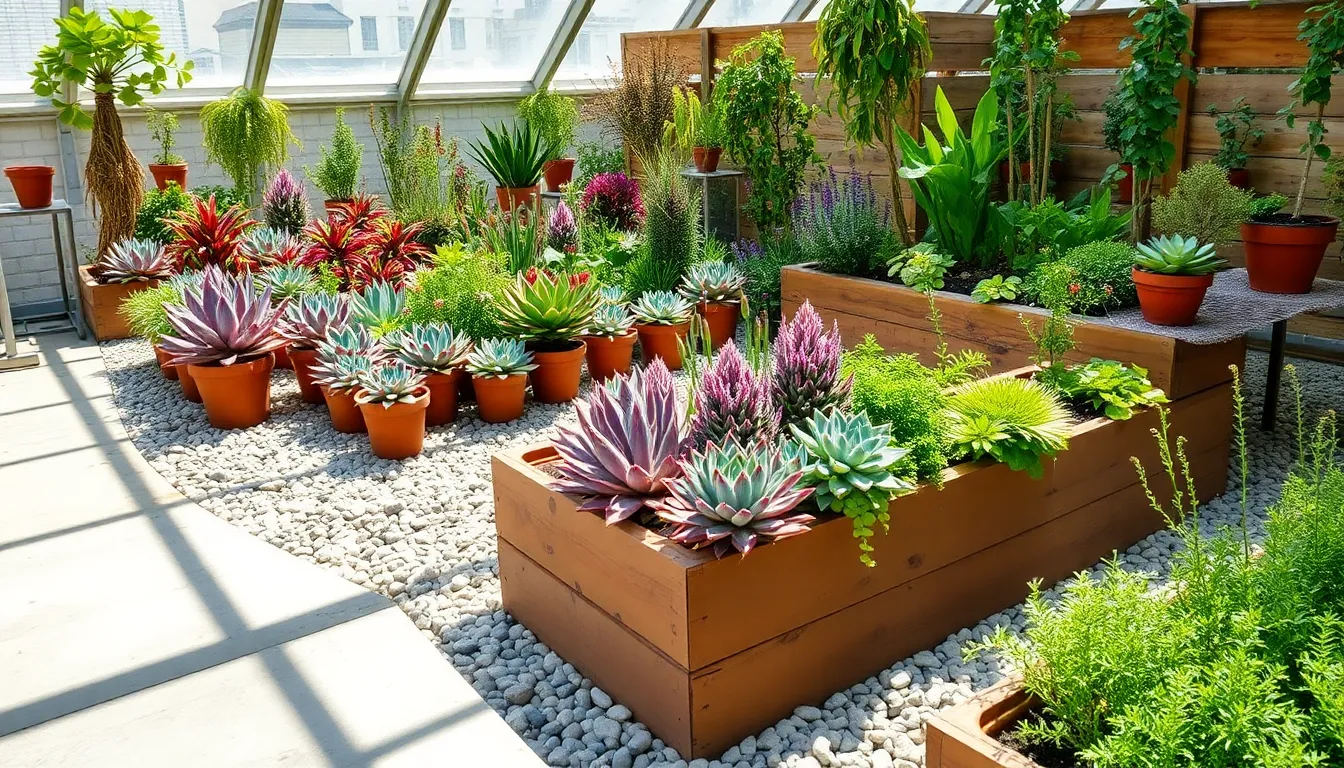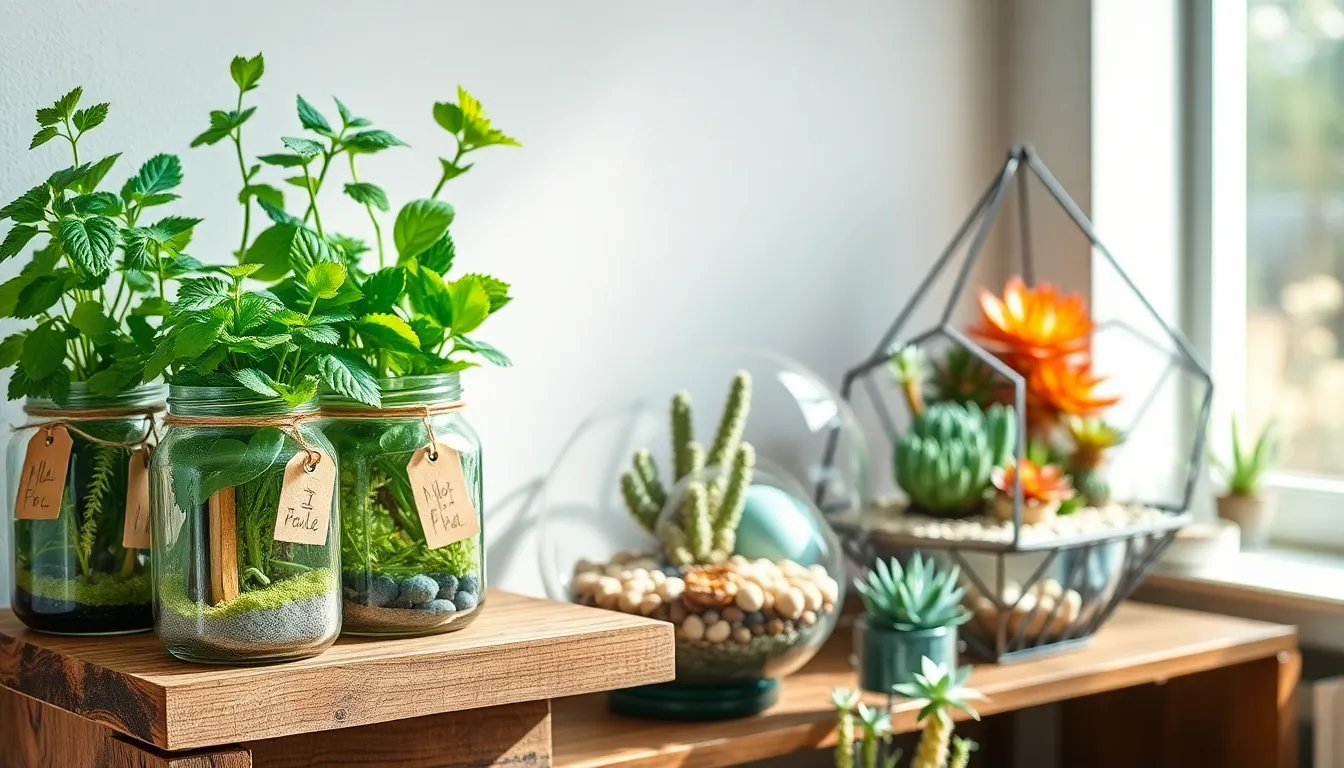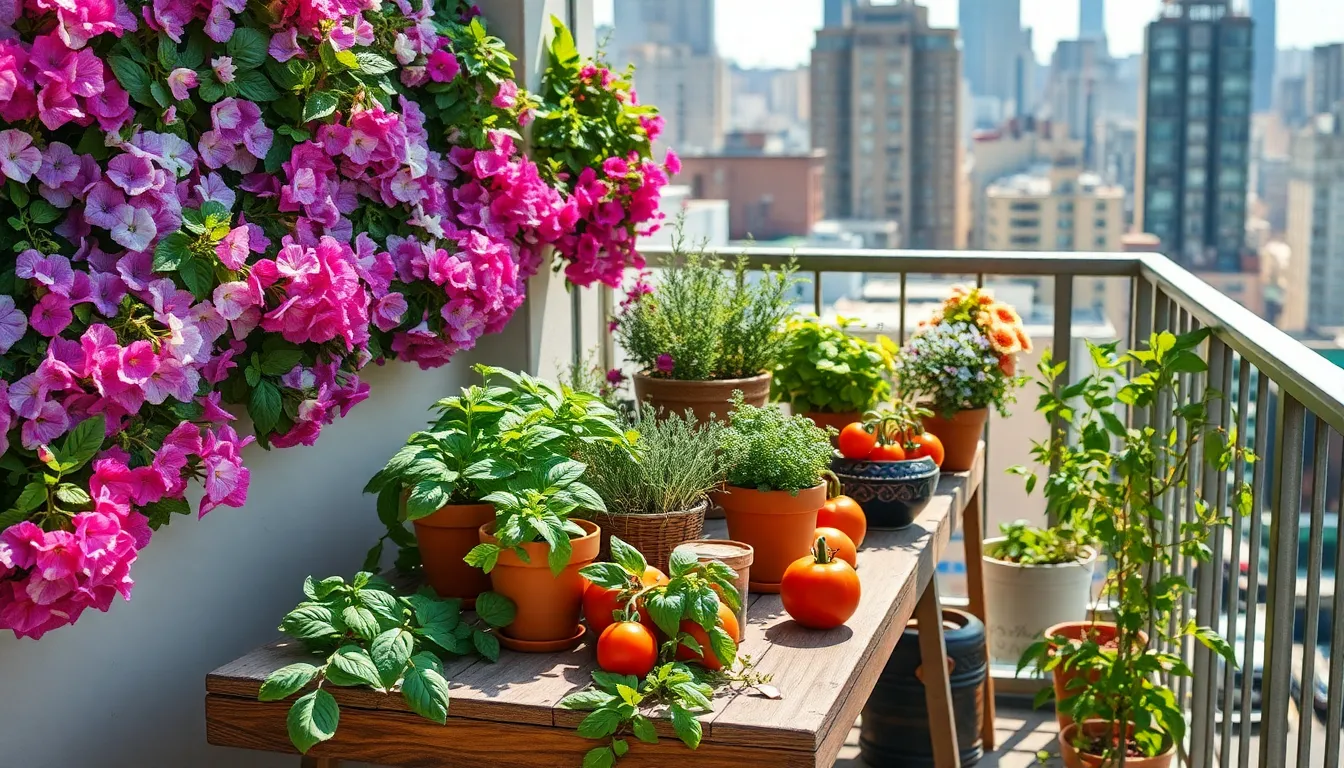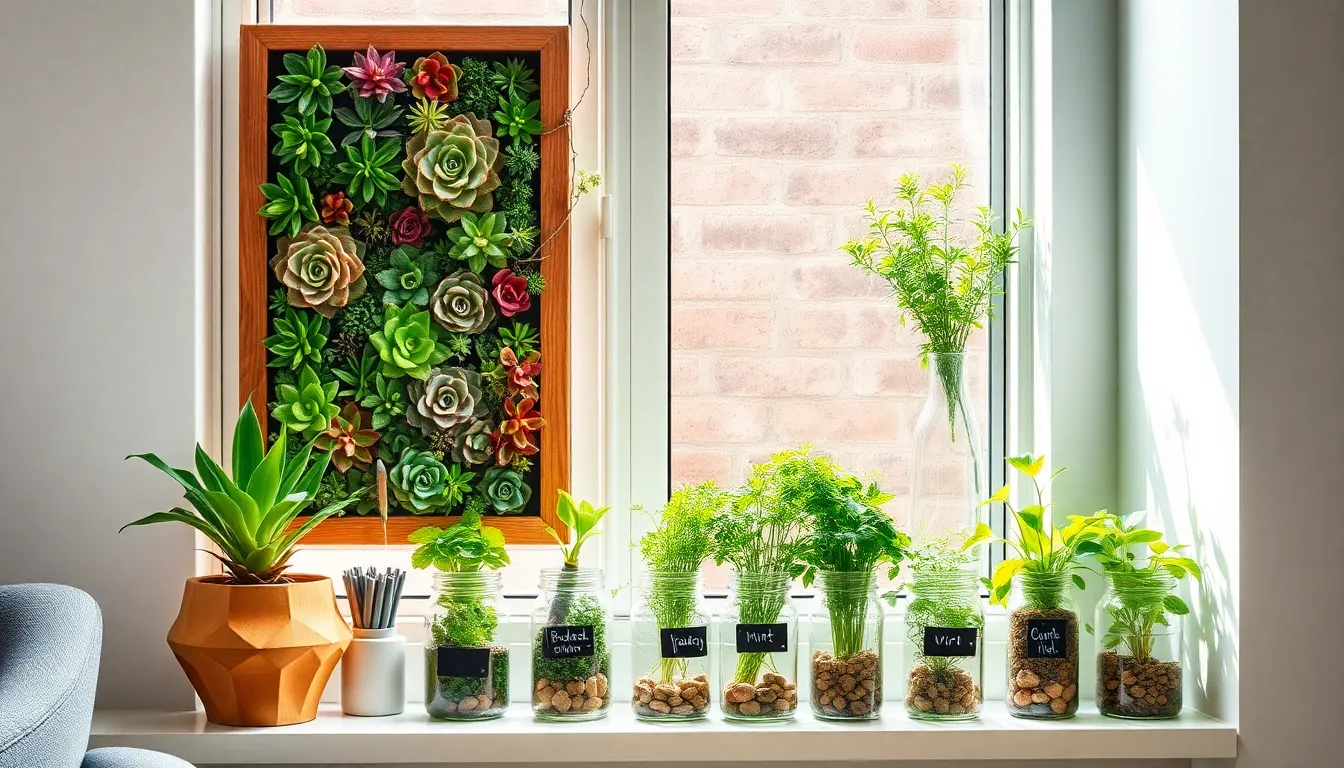Imagine transforming your rooftop into a lush, thriving oasis without worrying about constant watering. Whether you’re just dipping your toes into the world of gardening or you’ve got soil under your nails from years of experience, “10 Low-Water Rooftop Garden Layouts” is your ticket to creating a sustainable, beautiful space above the city hustle. This guide is packed with innovative designs that not only conserve water but also maximize the potential of your rooftop sanctuary.
In this collection, you’ll find layouts that are as practical as they are stunning, ensuring your garden is both eco-friendly and eye-catching. Discover the joy of cultivating greenery with minimal maintenance, providing you more time to relax and enjoy your elevated Eden. By embracing these low-water techniques, you’ll be well-equipped to nurture your plants through the seasons, boosting your confidence in managing a successful rooftop garden. Whether your goal is to create a personal retreat or contribute to urban biodiversity, you’re about to embark on a rewarding journey that makes the most of every drop.
Succulent Arrangements (Drought-Resistant Displays)
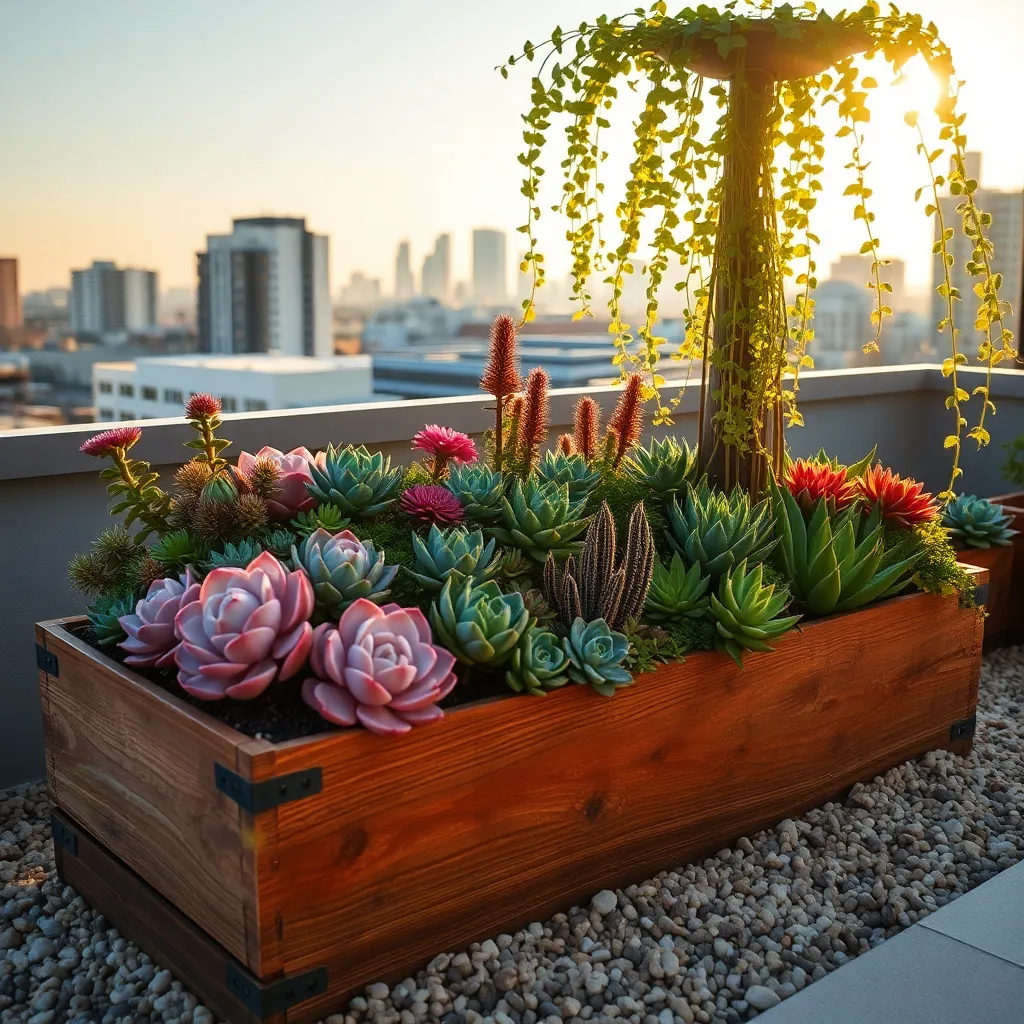
Succulent arrangements are ideal for rooftop gardens due to their drought-resistant nature. These plants thrive in sunny, dry conditions and require minimal maintenance, making them perfect for busy gardeners.
To create a stunning succulent display, start by selecting a variety of shapes, sizes, and colors. This diversity not only adds visual interest but also ensures a healthier arrangement, as different succulents can support each other in shared environments.
Use a well-draining soil mix, such as a cactus mix or a combination of potting soil, sand, and perlite, to prevent root rot. Ensuring proper drainage is crucial, so consider using containers with drainage holes or adding a layer of gravel at the bottom of your pots.
Watering succulents is straightforward but requires restraint; they prefer to dry out completely between waterings. Depending on your climate, this might mean watering every two weeks, but always check the soil moisture level before watering again to avoid overwatering.
For advanced gardeners, consider experimenting with vertical arrangements or creating living walls using succulent cuttings. This technique not only maximizes space but also turns your rooftop garden into a lush, green sanctuary.
Self-Watering Planters (Efficient Moisture Retention)
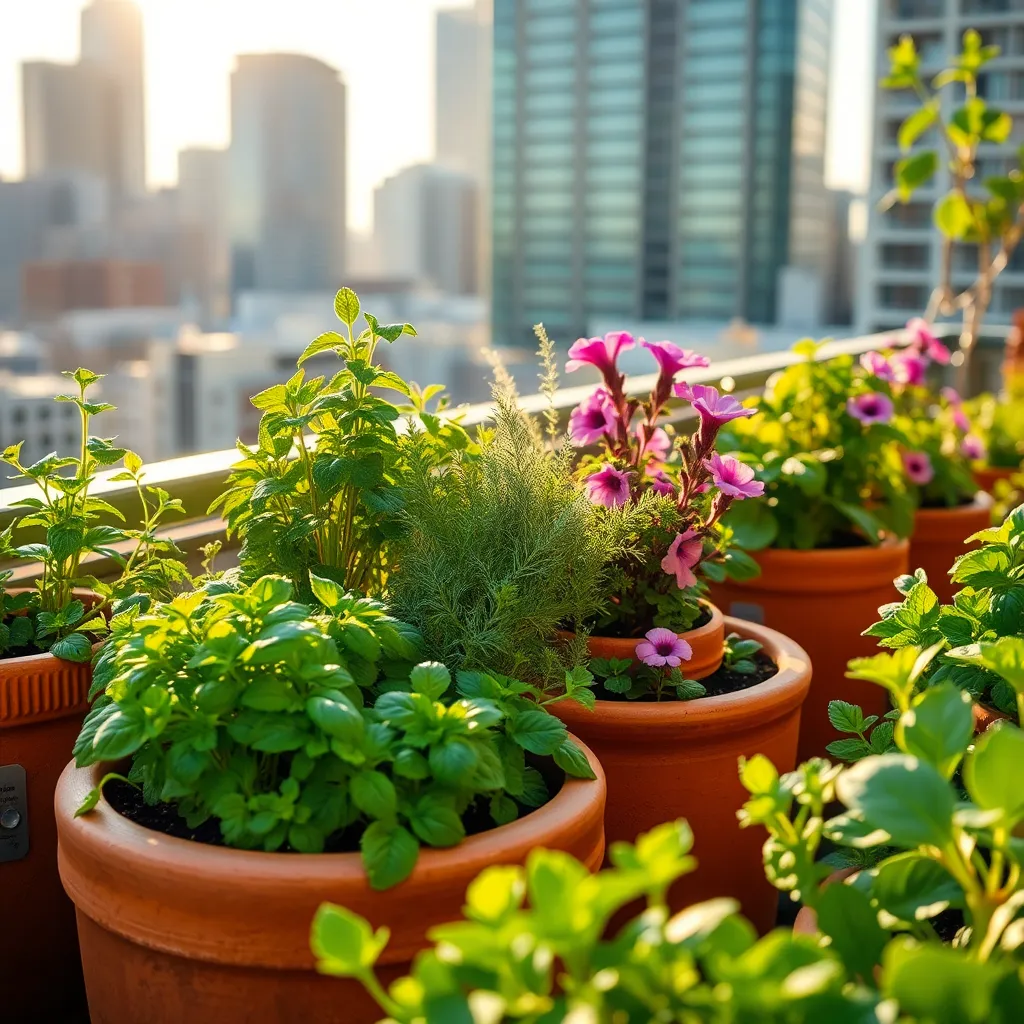
Self-watering planters are a fantastic addition to any rooftop garden, especially for those looking to maintain efficient moisture retention with minimal effort. These planters typically feature a reservoir at the bottom, allowing plants to draw water as needed, reducing the frequency of manual watering.
To get started, choose a self-watering planter that suits the size of your plants and available space. Ensure the planter has a sufficient reservoir capacity to accommodate your plants’ needs, especially during hot summer months when water evaporation is high.
Select a high-quality potting mix that supports moisture retention, such as one containing coconut coir or peat moss. These materials help to maintain a consistent moisture level, ensuring your plants remain healthy and well-nourished.
For those growing a variety of plants, consider grouping species with similar water needs in the same planter. This strategic grouping not only simplifies your watering routine but also optimizes the use of the self-watering system.
Regularly check the water level in the reservoir to ensure it remains adequately filled, especially during dry spells. By maintaining optimal conditions, your rooftop garden will thrive with the help of self-watering planters, offering a lush, green environment with reduced water consumption.
Cactus Varieties (Heat-Tolerant Selections)
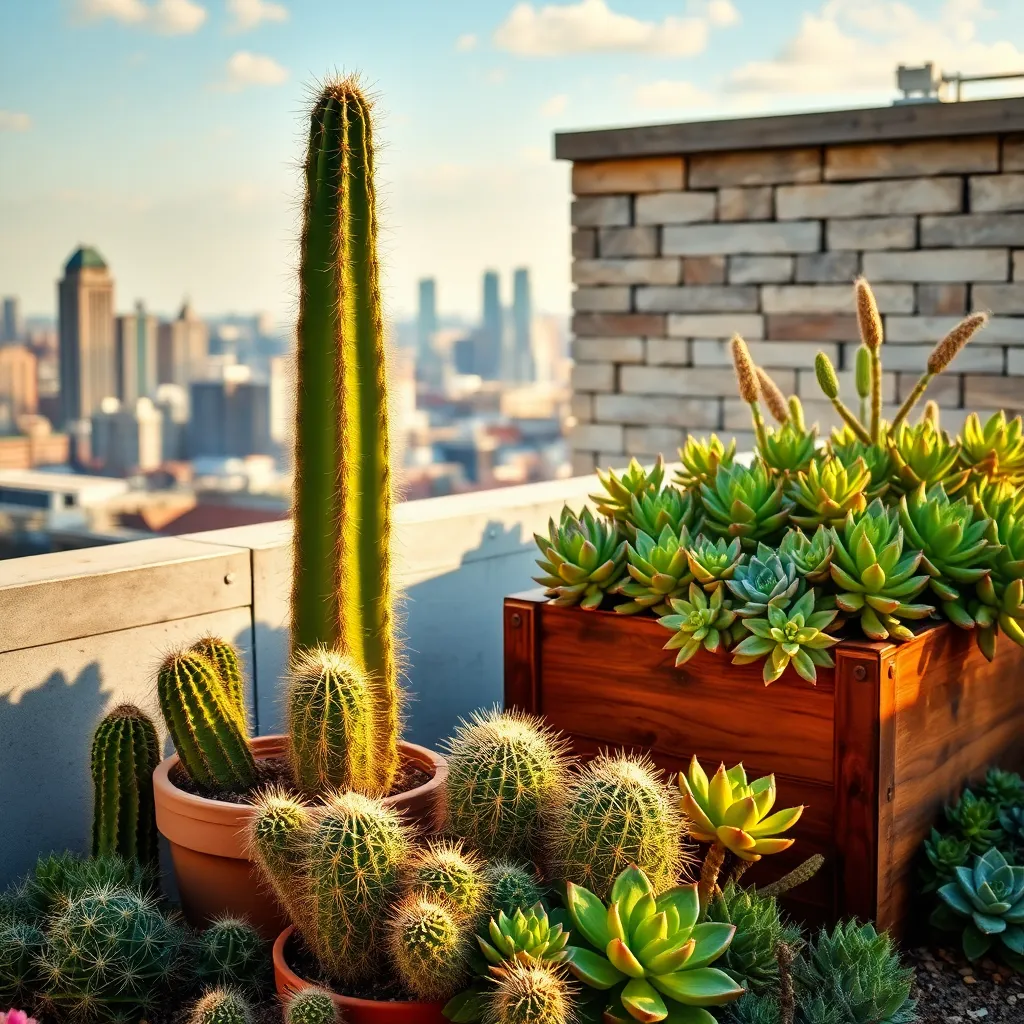
Cacti are excellent choices for rooftop gardens, especially in areas with intense heat and limited water supply. These resilient plants thrive in well-draining soil, making a mix of sand, perlite, and potting soil ideal for their growth.
When selecting cactus varieties, opt for species such as the Golden Barrel (Echinocactus grusonii) or Prickly Pear (Opuntia spp.) for their exceptional heat tolerance. Both varieties require minimal watering, typically once every two to three weeks, allowing their roots to dry out completely between waterings.
Place your cacti in full sun to ensure they receive at least six hours of sunlight daily, which is crucial for their health and vibrant appearance. To protect them from extreme temperature fluctuations, consider using lightweight, reflective planters that prevent overheating.
For a beginner-friendly approach, propagate cacti from cuttings by allowing the cut end to dry and callous over before planting. Advanced gardeners can experiment by grafting different cactus species to create unique and resilient rooftop displays.
Mulch Covering (Minimize Evaporation)
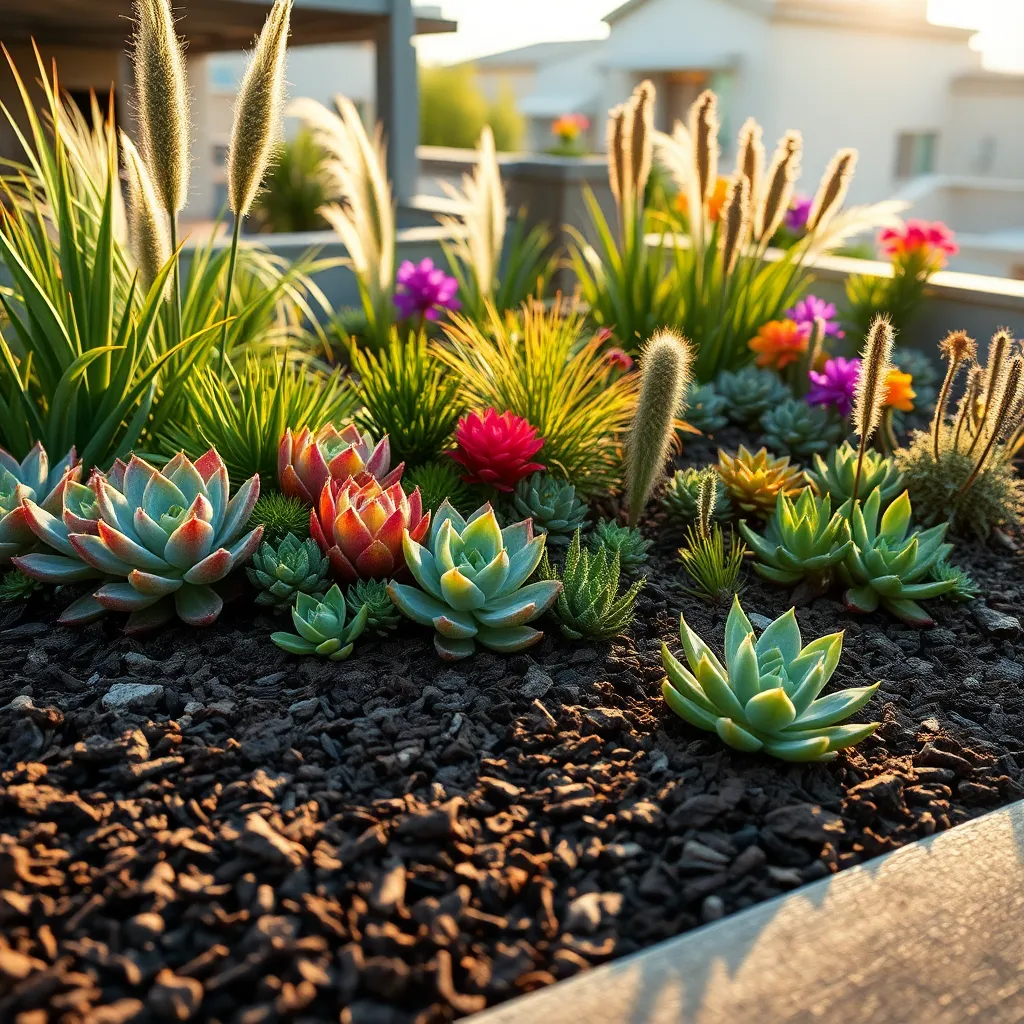
To minimize evaporation in your rooftop garden, using mulch is a highly effective technique. Mulch acts as a protective layer over the soil, reducing water loss and helping maintain consistent soil moisture levels.
Choose organic mulches like shredded bark, straw, or compost, which slowly decompose and enrich the soil. Apply a layer two to three inches thick around your plants, ensuring you leave a small gap around the stems to prevent rot.
For those in hotter climates, consider using stone or gravel mulch, which can also help reflect heat away from your plants. This type of mulch is particularly useful for succulent and drought-tolerant plant varieties, as it mimics their natural rocky habitats.
Regularly check the condition of your mulch, especially after heavy rains or strong winds. Replenish or adjust it as needed to ensure it continues to provide effective coverage and benefits to your plants.
Permeable Paving Stones (Improved Drainage)
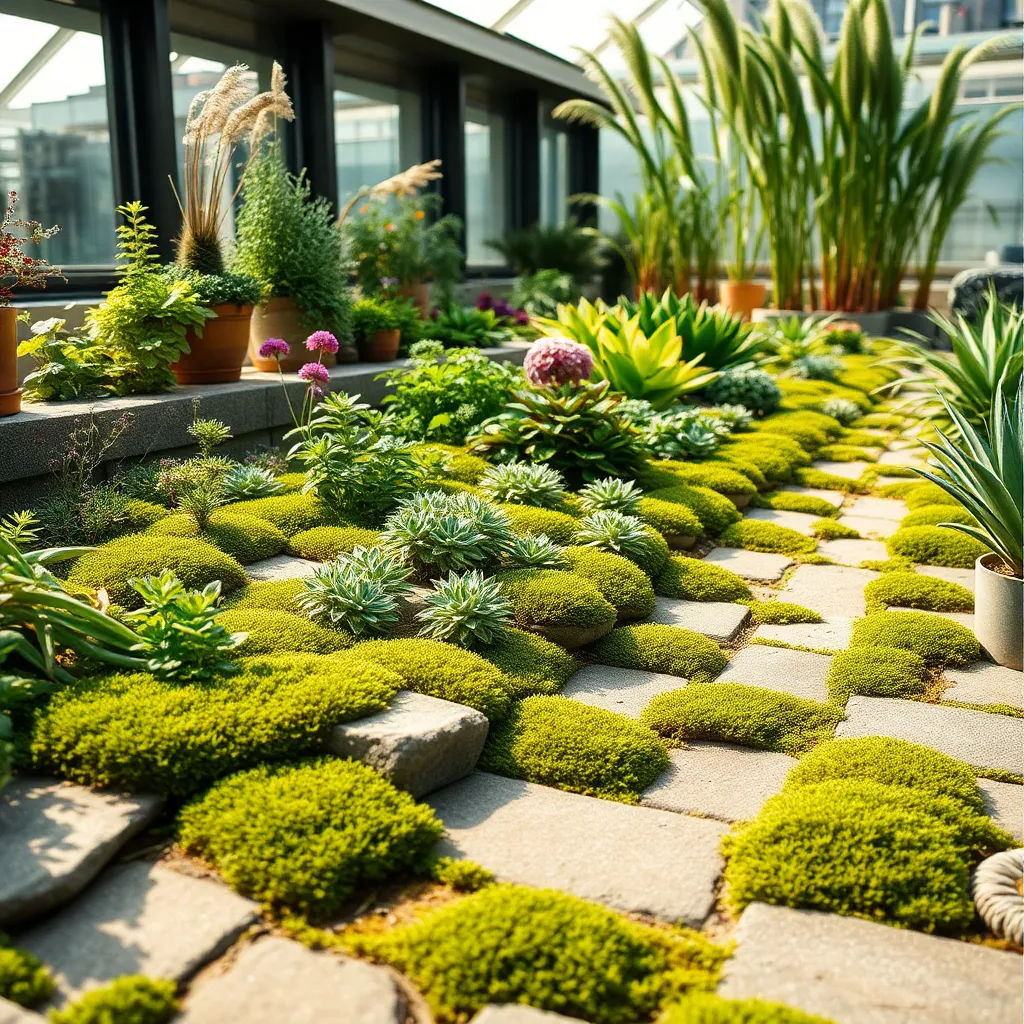
Integrating permeable paving stones into your rooftop garden can significantly improve drainage and reduce water runoff. These stones allow water to seep through gaps into the substrate below, which helps to prevent pooling and potential water damage to underlying structures.
For best results, choose paving stones specifically designed for high permeability and durability. Look for options that are made from materials like concrete or recycled plastic, which are not only sustainable but also effective in managing water flow.
Installation is crucial to ensure functionality, so consider laying them over a base layer of coarse gravel. This setup encourages efficient drainage by directing excess water to flow through the gravel layer, thus aiding in water retention for plants while preventing saturation.
Maintenance of permeable paving is straightforward yet essential to keep them functioning well. Regularly sweep away debris and check for any blockages in the gaps to maintain optimal water permeability, ensuring that your rooftop garden remains lush and healthy.
Shade Cloth Canopies (Temperature Regulation)
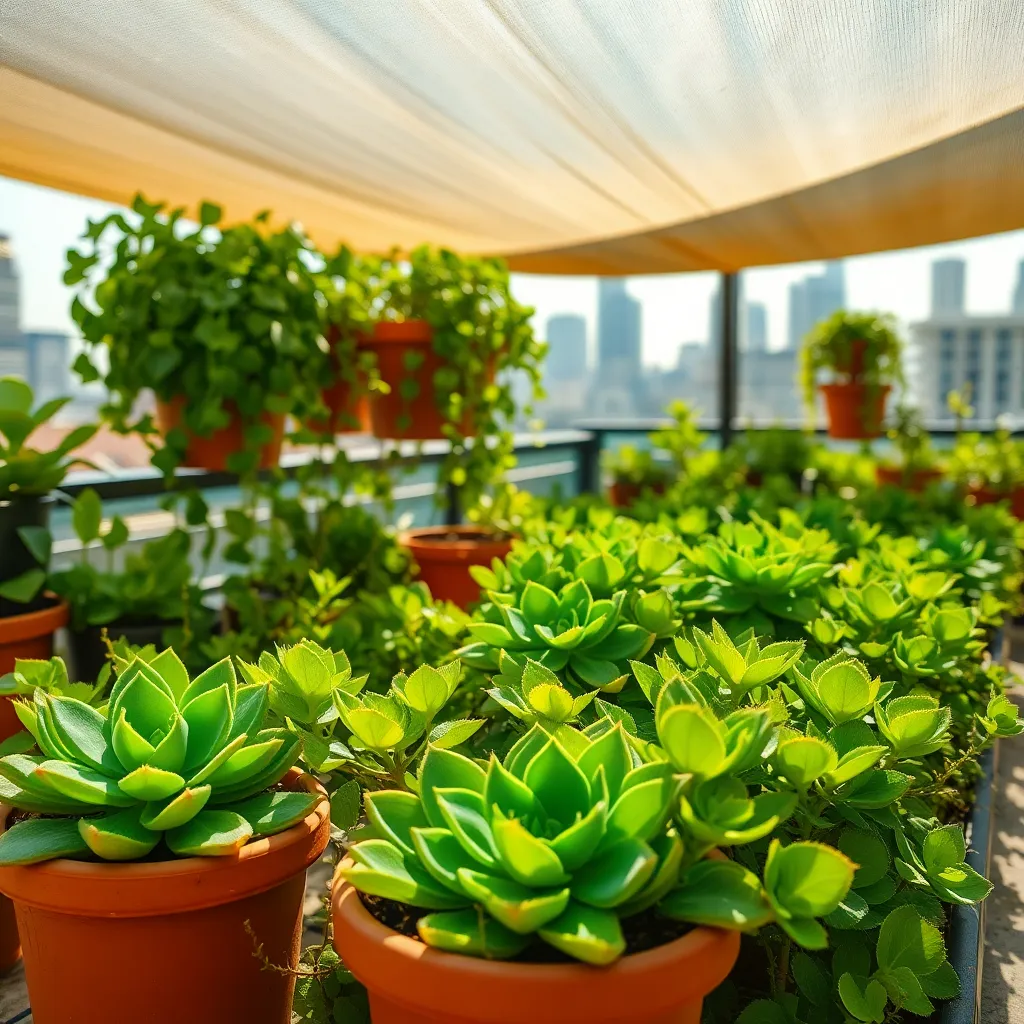
To create a comfortable microclimate for your rooftop garden, consider using shade cloth canopies to regulate temperature. These canopies help protect plants from intense sunlight, reducing evaporation and keeping soil moisture levels stable.
An effective shade cloth canopy can lower the temperature around your plants by up to 10 degrees Fahrenheit. This cooling effect is especially beneficial for shade-loving plants or those susceptible to heat stress, such as ferns and hostas.
For best results, select a shade cloth with a density of 30-50%, which balances sunlight filtering and heat reduction. Secure the cloth using a simple frame or attach it to existing structures to allow for easy removal or adjustment as the seasons change.
Ensure proper air circulation under the canopy to prevent fungal diseases. Position the shade cloth to allow morning sunlight to reach your plants while blocking harsh afternoon rays, promoting healthy growth and reducing the need for frequent watering.
Native Grasses (Low-Maintenance Greenery)
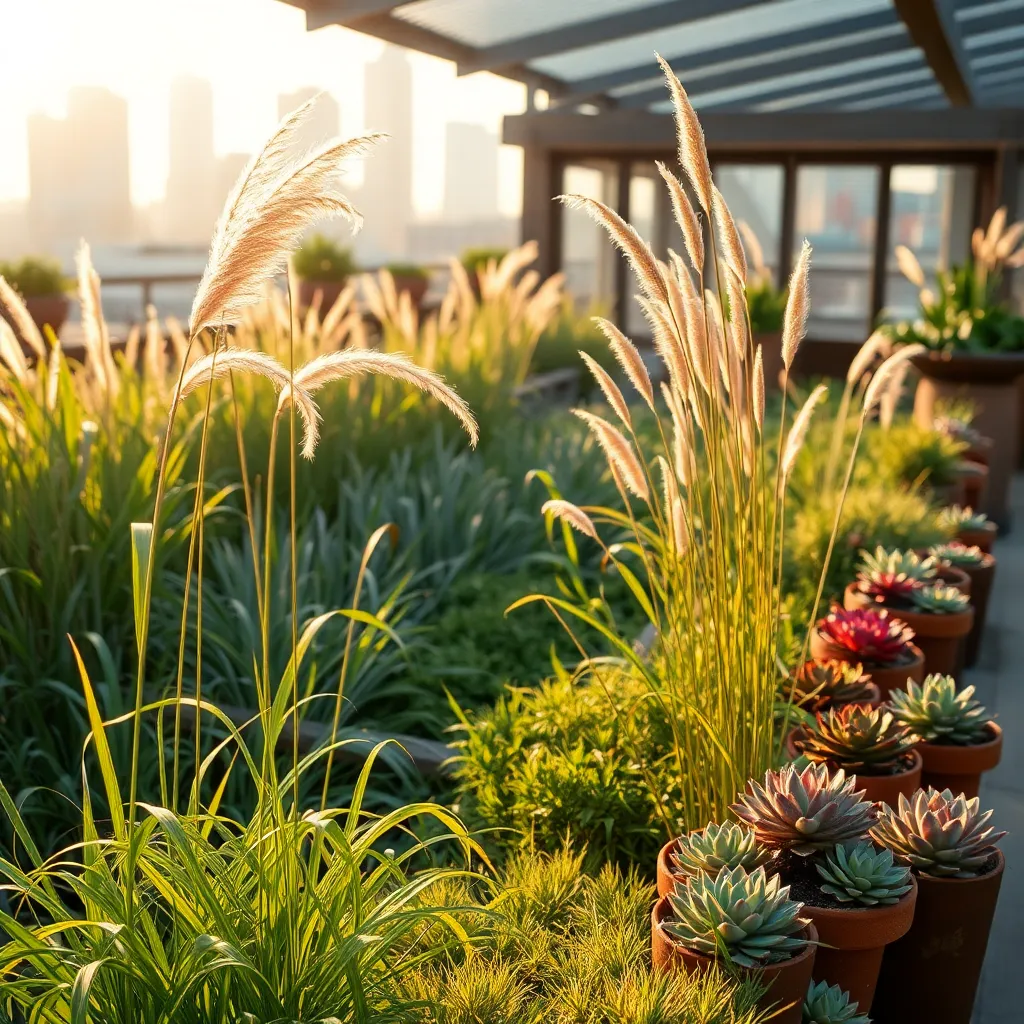
Native grasses offer an excellent low-maintenance option for rooftop gardens, providing lush greenery without high water demands. These grasses are accustomed to local climates, making them more resilient to drought and temperature fluctuations.
Incorporating native grasses into your rooftop garden is a smart choice for both beginners and experienced gardeners. They require minimal care, needing only occasional watering once established, typically about once every two weeks depending on rainfall.
For the best results, choose a well-draining soil mix to prevent waterlogging, which can be detrimental to the roots. A sandy or loamy soil enriched with organic matter will support healthy growth and require less frequent irrigation.
Consider using grasses such as Little Bluestem or Prairie Dropseed, which are known for their adaptability and aesthetic appeal. These varieties not only thrive with less water but also add texture and movement to your rooftop space, creating a dynamic and soothing environment.
Vertical Garden Walls (Space-Saving Solutions)
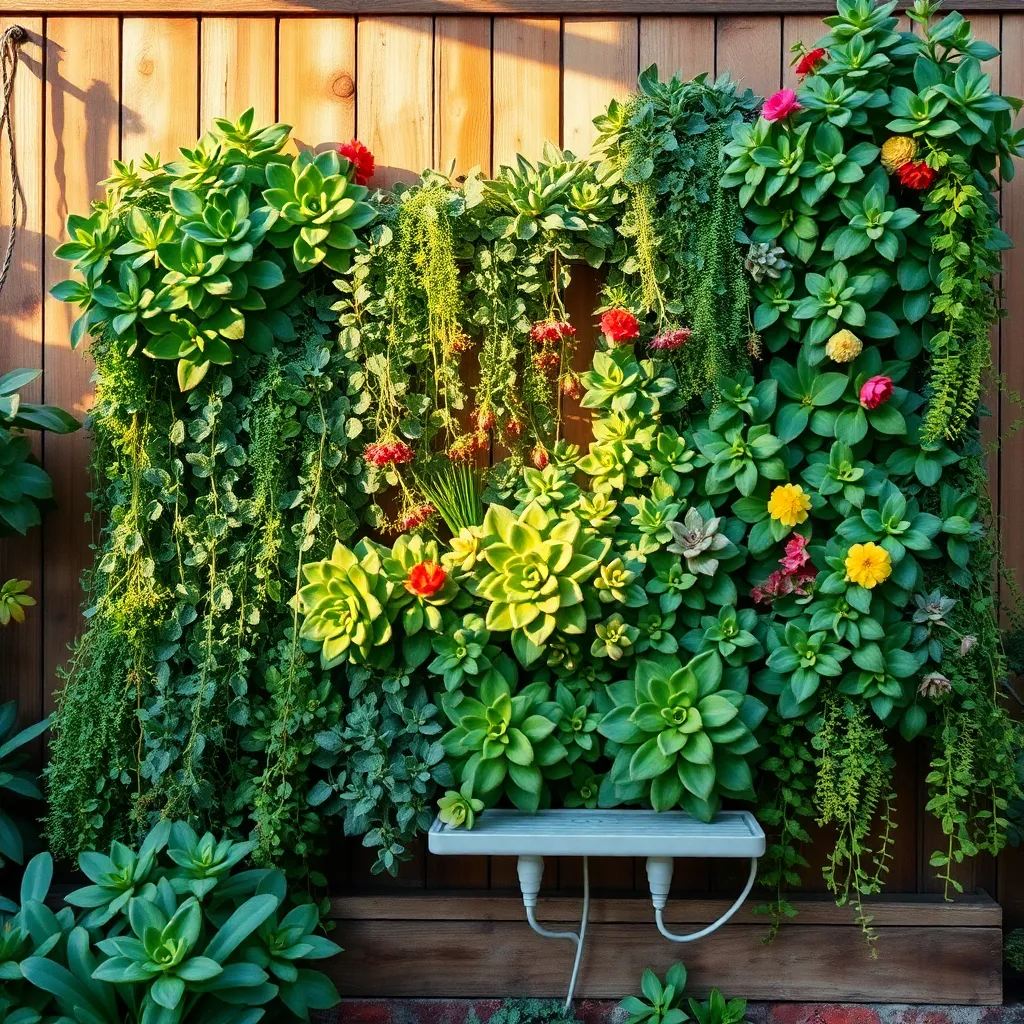
Vertical garden walls offer an innovative way to maximize space on your rooftop while conserving water. These garden walls are perfect for urban settings where ground space is limited, allowing you to create lush greenery without the need for extensive horizontal areas.
Start by choosing lightweight, drought-tolerant plants such as succulents, ferns, or herbs that thrive with minimal watering. It’s essential to use a quality, well-draining soil mix designed for vertical gardens, which promotes healthy root development and prevents waterlogging.
For beginners, using modular planting panels can simplify the process, as they are easy to install and maintain. Ensure your vertical garden receives adequate sunlight by positioning it on a sunlit wall or using reflective surfaces to enhance light exposure.
Advanced gardeners might consider incorporating a drip irrigation system to maintain consistent moisture levels, especially in warmer climates. Regularly monitoring plant health will help you identify any water stress early, allowing for prompt adjustments in your watering schedule.
Smart Irrigation Controllers (Automated Water Management)
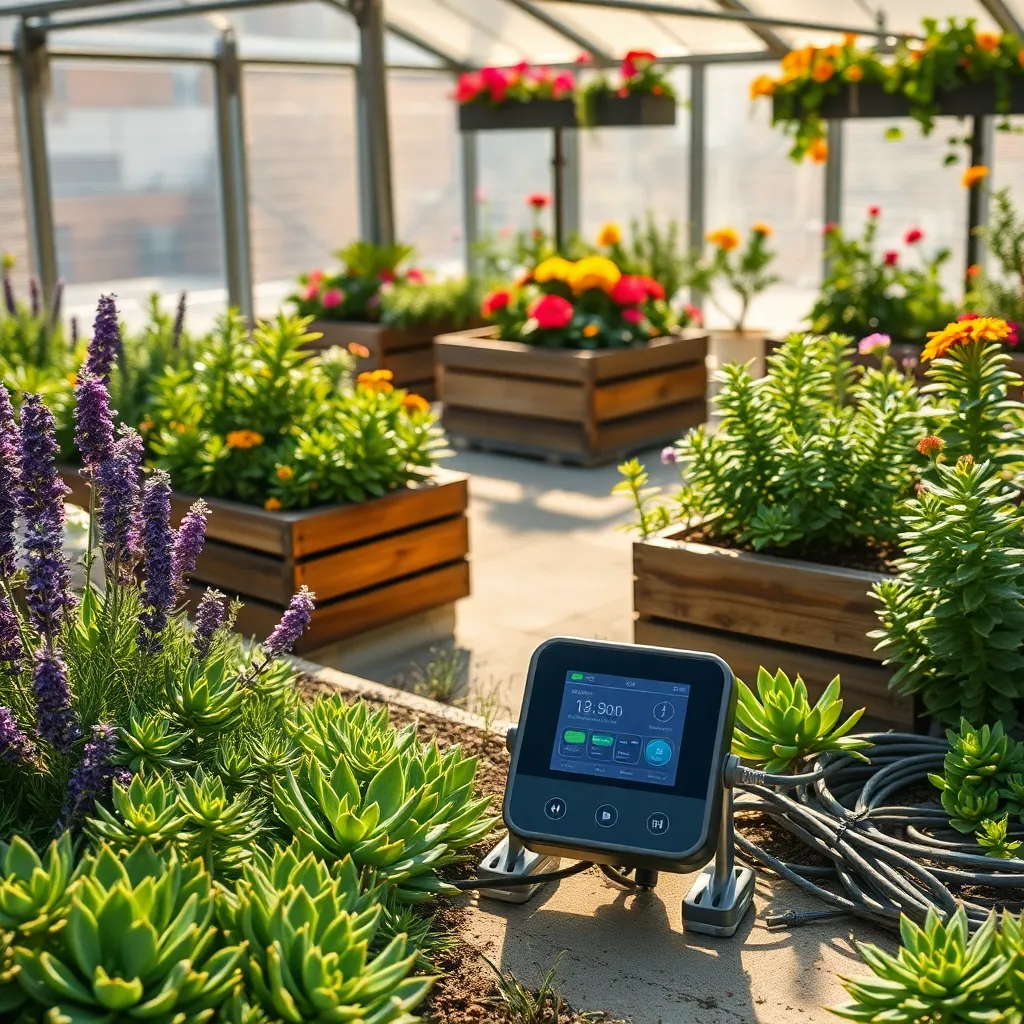
Smart irrigation controllers are a game-changer for rooftop gardens, especially when managing water efficiently is a priority. These devices automatically adjust watering schedules based on weather forecasts and soil moisture levels, ensuring your plants receive just the right amount of water.
Installing a smart irrigation controller can be a simple process, often requiring just a few connections to your existing water supply. For beginners, many models offer user-friendly apps that guide you through setup and provide real-time updates on your garden’s hydration status.
Advanced users might appreciate features like zone-specific watering, which allows you to tailor irrigation to the varying needs of different plant types within your garden. For instance, succulents and herbs have different moisture requirements, and smart controllers can adjust watering accordingly to optimize plant health.
To make the most of these devices, ensure your garden has a well-draining soil mix to prevent waterlogging, which is crucial in container gardening. A mix of cactus soil and perlite can provide excellent drainage, reducing the risk of overwatering.
Herb Spirals (Compact Culinary Gardens)
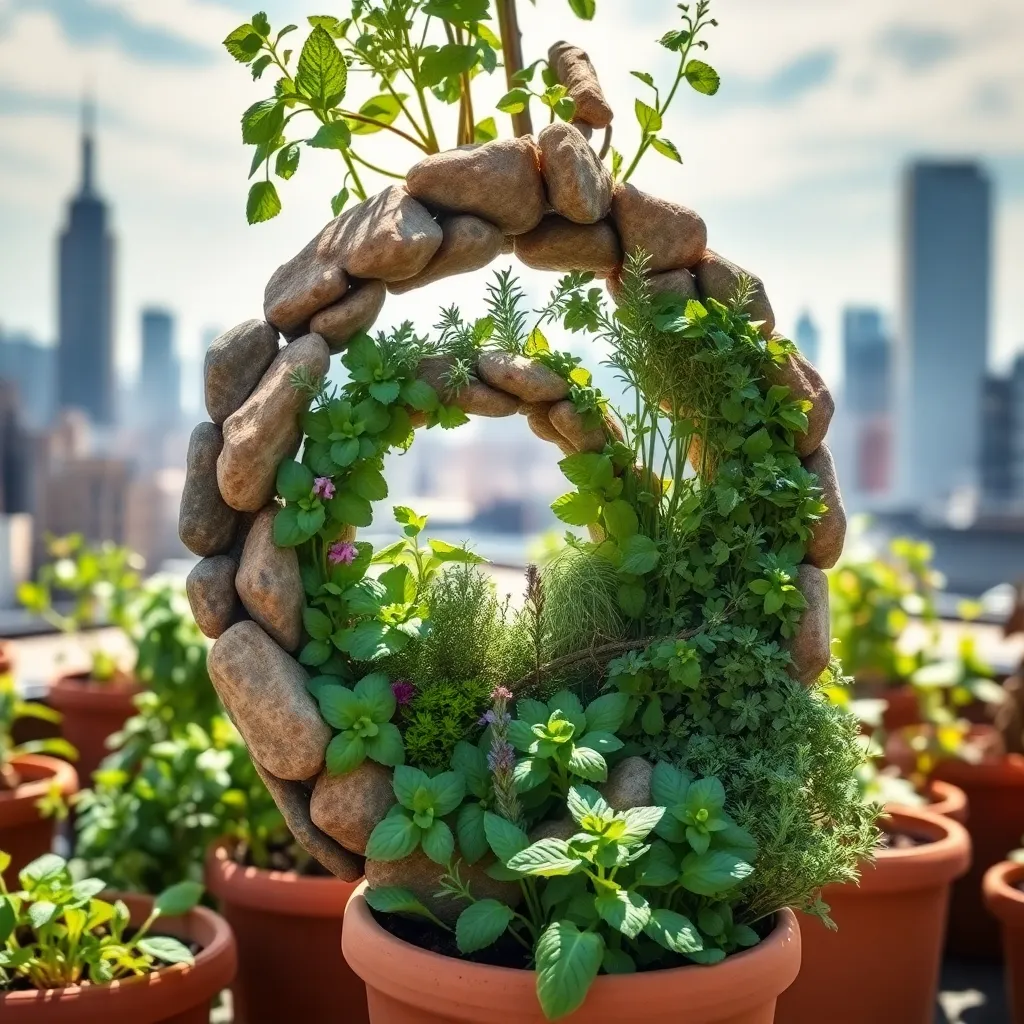
Herb spirals are an ingenious way to maximize planting space in a small area, making them ideal for rooftop gardens. By using a helical design, you can create different microclimates that cater to a variety of herbs, offering both aesthetic appeal and functionality.
To construct a herb spiral, start with a base of stones, bricks, or recycled materials, spiraling upward to form a mound. This design allows for excellent drainage at the top, perfect for Mediterranean herbs like rosemary and thyme, which thrive with less water.
Consider planting moisture-loving herbs like mint and basil at the bottom of the spiral, where water naturally collects. Using a high-quality, well-draining soil mix is crucial to ensure that all herbs receive the right balance of nutrients and moisture.
For those looking to optimize their spiral, adding a layer of mulch can help maintain soil moisture and suppress weeds. Regular pruning and harvesting not only keep the herbs healthy but also encourage bushier growth and more abundant yields.
Conclusion: Growing Success with These Plants
In exploring the ’10 Low-Water Rooftop Garden Layouts,’ we’ve uncovered key relationship concepts that nurture growth without overwhelming resources. From the importance of balance and sustainability to the art of adaptability and resilience, each layout mirrors vital aspects of a thriving partnership. We’ve journeyed through the significance of communication, the beauty of compromise, and the strength found in diversity, all while understanding the need for individuality within a shared space. These insights are not just about gardens but extend to cultivating fulfilling relationships.
Now is the time to bring these concepts into your own life. Take a moment to reflect on which layout resonates with your relationship’s current needs and consider small, actionable steps to integrate these principles. Whether it’s setting aside time for open dialogues or embracing adaptability in your routines, every effort contributes to a flourishing bond.
Remember, the seeds of a robust relationship are planted through intentional actions. Bookmark or save this article as a valuable resource for ongoing reference, ensuring you’re always equipped with the tools to nurture your connection. As you sow these ideas, look forward to a future of relational success where your partnership grows stronger, rooted in understanding and mutual care.

